
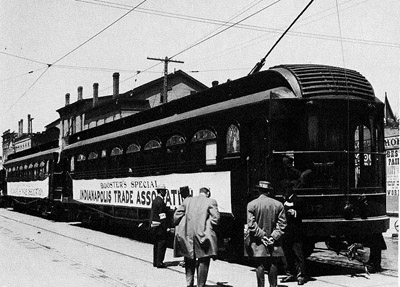
|
In the first few decades of the twentieth century the interurban competed with other technology. While many people still relied on the horse and buggy, the automobile was developing as well. The locomotive was also a major competitor: tracks often ran parallel to one another. People with a financial interest in the interurban had to sell the public on its practicality. In the early days a common strategy was to organize a group of "boosters" such as these. The first look an isolated town might get of the interurban would be when these fanatics would roll into town. The remote citizens could witness first-hand the potential of the interurban. |
| This interesting promotion took place in Ohio. An interurban raced an airplane. Amazingly the interurban won. Was the fix in? It seems likely. Who would hire an airplane to win? The implication is clear. This begs the question: could a car ever beat a plane? Of course not. To the right note that a film of the race was being shown at an area cinema. Also note that those are not in fact, each the same car (numbers on front). | |

|
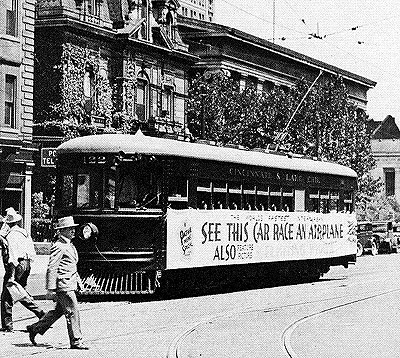
|
| Attempting to survive, interurban companies had three primary strategies. One strategy was to create recreational destinations on its routes, including amusement parks: "The amusement parks with their dance pavilions would not have come into being without the urban and interurban railways. And those pavilions formed a series of links in the chain of locations along which the bands traveled. They also provided employment for countless musicians in the local or regional groups known as territory bands" (Pavilion in the Rain). When the automobile and its highways became the dominant form of transportation, roads would have to reincorporate these destinations. In Chicago the stalwart South Short Line connected the Second City to the hinterlands of northern Indiana. The South Shore moved communter traffic, but also promoted the rural spaces as lands of recreation to city dwellers. The promotional posters below entice Chicagoans to spend their leisure time doing such things as attending Notre Dame football games or frolicing at the Dunes, which still exists today as a popular state park on the shores of Lake Michigan. | |
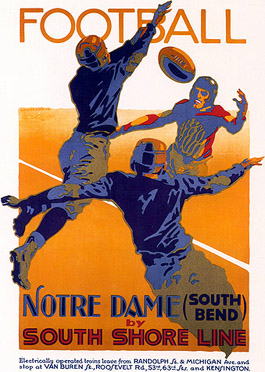
|
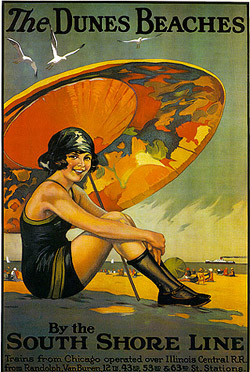
|
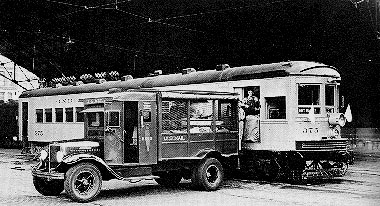 | Another strategy was to take on cargo in addition to passengers. Many of the lines that were able to survive the longest did so by carrying fairly large amounts of cargo. Mail and parcel distribution became a major industry for the interurban. |
| A third strategy was of course to lower fares. This photo was taken in 1938. In the face of the depression the Union Electric Railway of Kansas cut rates to a cent-a-mile.(Hilton) The sign on this interurban reads, "Ride the Interurban and Save." With gas a precious commodity the interurban was perhaps affordable. All of these strategies ultimately failed. | 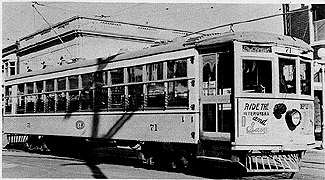
|